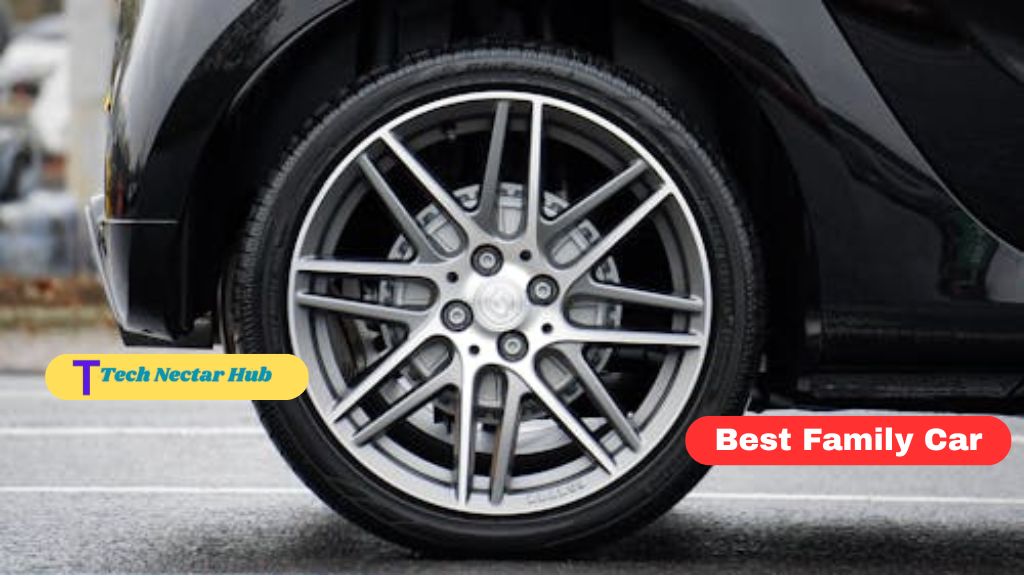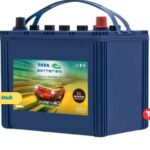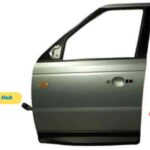How to Increase Your Car Mileage is the most common question Indian drivers ask right after every fuel price hike. Fuel costs eat a big slice of household budget, so squeezing extra kilometres from every litre becomes pure savings. This long‑form guide breaks down proven methods, myths, and maintenance tricks that really work. We keep language simple and paragraphs short so everyone—from first‑time hatchback owners to seasoned highway cruisers—can put tips into action today. The focus keyword How to Increase Your Car’s Mileage appears here for the first time to signal relevance to both humans and search engines.
Why Mileage Matters
Spending less on petrol or diesel frees money for family trips, service bills, and even a weekend getaway. Better mileage also means fewer tailpipe emissions, which helps the planet. Finally, cars that sip fuel retain resale value because the next buyer knows they will save long term. Knowing How to Increase Your Car’s Mileage therefore pays both your wallet and the environment.
Understanding Mileage Basics
What is Mileage
Mileage is the distance a vehicle travels per unit of fuel, measured as km per litre in India. Carmakers quote ARAI test numbers, but real‑world mileage is affected by traffic, driving style, and maintenance. Learning How to Increase Your Car’s Mileage begins with understanding these variables.
Factors That Hurt Mileage
Aggressive acceleration, over‑revving, under‑inflated tyres, cheap engine oil, and carrying unnecessary weight—all drag down efficiency. Even small habits like longer idling at traffic lights can shave 5–10 percent off your figures.
Driving Habits That Boost Efficiency
Smooth Acceleration and Deceleration
Pressing the throttle like a feather avoids fuel‑rich injection spikes. Use the highest gear possible without engine knocking. Research by SAE shows gentle acceleration improves fuel economy by up to 15 percent.
Maintain Steady Speed
Constant speed means the engine runs in its most efficient band. On highways, cruise at 80–90 km/h rather than 110 km/h; wind resistance rises exponentially above 90. How to Increase Your Car’s Mileage often boils down to slowing just 10 km/h.
Anticipate Traffic Flow
Look two cars ahead and release the accelerator early instead of braking late. Each brake‑to‑throttle cycle wastes kinetic energy you just paid to create. This single habit can improve city mileage by 8 percent.
Minimise Idling
If a stop lasts more than 30 seconds, switch off your engine. Modern starters are robust, and fuel burnt while idling is pure waste. Start‑stop technology in new cars automates this job; older cars can mimic it manually.
Use Cruise Control Wisely
Engage cruise only on flat highways. On hilly terrain, cruise may hold speed by injecting extra fuel on climbs. Knowing when to use cruise is a smart piece of the How to Increase Your Car’s Mileage puzzle.
Maintenance Checklist for High Mileage
Keep Tyres Properly Inflated
Tyres lose 1 psi each month. A drop of 4 psi can cut mileage by 3 percent. Check pressure weekly when tyres are cold. Consider nitrogen for slower leakage, though benefits are marginal.
Choose Low Rolling Resistance Tyres
LRR compounds reduce friction with the road. Switching to LRR tyres can add up to 2 km/l on highways, paying back the premium price within a year for high‑milers.
Align and Balance Wheels
Misaligned wheels skid micro‑degrees sideways, increasing drag. Align every 10,000 km or if the steering pulls. Balanced wheels also prevent vibration that can burn extra fuel.
Use Manufacturer‑Recommended Engine Oil
Viscosity matters. Thicker oil raises friction; thinner oil may reduce protection. Stick to the grade specified in the manual. Synthetic oils flow better in cold starts and can improve mileage by 2 percent.
Replace Air Filters on Time
Clogged filters choke airflow, causing rich fuel mixtures. Replace every 15,000 km or clean if reusable. A clean filter can restore up to 10 percent lost mileage.
Check Spark Plugs
Worn plugs misfire, wasting fuel. Inspect every 20,000 km and replace as needed. Iridium plugs last longer and maintain optimal spark for better combustion.
Maintain Fuel Injectors
Use quality fuel and periodic injector cleaner to prevent clogging. Dirty injectors distort spray patterns, lowering efficiency. Professional cleaning every 40,000 km keeps combustion lean and efficient.
Keep Battery and Alternator Healthy
A weak battery forces the alternator to work harder, loading the engine. Ensure connections are clean and the belt tension correct.
Weight and Aerodynamics
Remove Unnecessary Load
Each extra 25 kg cuts mileage by about 1 percent. Clear the boot of golf clubs, old books, and unused tools. Extra roof rails add drag; remove them when not needed.
Streamline the Car
Driving with windows down at speeds above 80 km/h increases drag. Use AC on highway but set it to eco or recirculate mode. Spoilers and body kits may look sporty but can worsen drag unless wind‑tunnel tested.
Use Tonneau Cover in Pickups
If you own a pickup, install a tonneau cover. Studies show it can reduce drag by 5 percent, improving mileage by up to 1.5 km/l depending on engine size.
Fuel Choice and Additives
Octane Rating
Using fuel with higher octane than required usually offers no benefit and costs more. Follow owner’s manual. High‑compression engines need high octane; low‑compression engines do not.
Branded Fuels with Detergents
Premium fuels may contain detergents that keep injectors clean. The mileage gain is indirect but can matter over tens of thousands of kilometres.
Fuel Additives: Myth vs Reality
Most aftermarket additives promise big gains but deliver little. Stick to products certified by BIS or listed by your carmaker. Remember How to Increase Your Car’s Mileage relies more on maintenance than magic potions.
Smart Technology Aids
Eco Mode
Many new cars offer an Eco drive mode that softens throttle response and optimises gear shifts. Engage it in city traffic for immediate 5 percent gains.
On‑Board Trip Computer
Use the instant mileage readout to fine‑tune driving style. Treat it like a live efficiency game where high scores mean real savings.
Telematics and Mobile Apps
OBD II dongles paired with apps analyse trips and provide actionable feedback, helping you master How to Increase Your Car’s Mileage with data.
Planning and Routing
Avoid Peak Traffic
Leaving 15 minutes early can cut stop‑go traffic, boosting mileage and slashing travel time. Google Maps and Waze show live traffic; use them.
Combine Errands
Multiple cold starts waste fuel because engines run rich until warmed. Plan errands in one loop instead of separate trips. Cold‑start penalty can be 12 percent per trip.
Carpool and Ride Share
Sharing rides divides fuel cost by occupants. Even two people carpooling once a week saves about 25 litres annually, depending on commute length.
Advanced Tips for Enthusiasts
Engine Remapping
ECU remaps can retune fuel‑air ratios for efficiency rather than power. Only choose reputed tuners and ensure compliance with emission norms.
Low Viscosity Transmission Fluids
Like engine oil, transmission fluid thickness affects drag. Synthetic ATF or gear oil can reduce frictional losses, giving marginal mileage gains.
Electric Power‑Steering Retrofits
If your older car runs hydraulic steering, switching to electric can reduce engine load slightly, though cost may outweigh benefits.
Solar Trickle Chargers
Parking under the sun with a dash‑mounted solar panel keeps the battery topped and reduces alternator load on short trips.
Cost‑Benefit Table of Key Mileage Tips
| Tip | Upfront Cost | Average Mileage Gain | Payback Distance |
|---|---|---|---|
| Maintain tyre pressure weekly | ₹0 | 3 % | Immediate |
| Switch to LRR tyres | ₹10,000 | 4 % | 18,000 km |
| Use synthetic oil | ₹2,400 extra | 2 % | 12,000 km |
| Remove 50 kg weight | ₹0 | 2 % | Immediate |
| Smooth driving habits | ₹0 | 10 % | Immediate |
| Wheel alignment | ₹600 | 3 % | 3,000 km |
Tracking Your Progress
Keep a logbook or use apps like Fuelio to record litres filled and odometer readings. A simple spreadsheet over three fill‑ups reveals trends. This tracking turns How to Increase Your Car’s Mileage from theory into measurable reality.
Environmental Impact
Improving mileage by 10 percent cuts carbon dioxide emissions by the same margin. For a car averaging 12 km/l and driving 15,000 km annually, that’s 180 kg less CO₂ each year. Small steps add up when millions adopt them.
Common Mistakes to Avoid
Ignoring the check engine light, waiting too long for service, using incompatible engine oil, and overfilling tyres are frequent blunders. Stay proactive and disciplined.
Final Thoughts
Mastering How to Increase Your Car’s Mileage is not a single fix but a lifestyle—combining gentle driving, regular maintenance, smart tech, and planning. Adopt even half the tips here, and you could save enough on fuel in one year to cover insurance or a family weekend trip.
FAQ
How often should I check tyre pressure?
Check weekly and before long trips. Use the pressure listed on the driver‑side door jamb.
Does running AC always reduce mileage?
Yes, by 5–10 percent, but driving with windows open at high speeds can offset the saving due to drag.
Do fuel additives improve mileage?
Most don’t. Stick to reputable brands and use as preventive maintenance, not as a miracle cure.
Will roof racks kill mileage?
Yes, roof racks add drag. Remove them when not in use.
Can cruise control save fuel?
On flat highways, yes. In hilly terrain, it may burn more.
How often should I replace engine oil?
Follow the interval in your owner’s manual; typically 10,000 km for modern synthetics.
Is nitrogen filling worth it?
It reduces pressure loss slightly but offers minimal mileage benefit.
Does engine warm‑up improve efficiency?
Modern engines don’t need long warm‑ups. Drive gently after 30 seconds to avoid wasting fuel.
Should I shift to a higher gear early?
Yes, up‑shifting around 2,000 rpm in petrol and 1,800 rpm in diesel engines improves mileage.
Will premium high‑octane fuel increase mileage?
Only if your engine requires it. Otherwise benefits are negligible.






